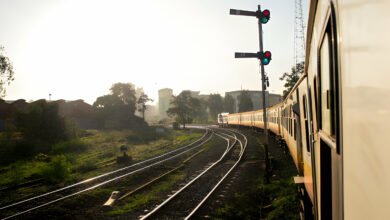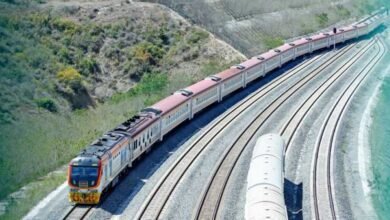
When Kenya secured a Ksh.352,01 billion (US$.3.2 billion) loan from China in 2014 to construct the Standard Gauge Railway (SGR) connecting Nairobi and the port city of Mombasa, critics termed the project costly and worried about its debt burden on Kenya.
The agreement was always deemed overpriced by independent observers and there have long been questions about the how the deal was structured.
But now in the middle of a growing global economic crisis coupled with coronavirus pandemic, those questions have become more pointed and urgent about the very financial viability of the project.
Seven years on now, the Central Bank of Kenya (CBK) Governor Dr. Patrick Njoroge has made it clear that the project has indeed pushed up the country’s debt burden.
Appearing before the Senate Committee on Finance and Budget on Wednesday, Dr. Njoroge noted that the SGR debt is around 11 percent of Kenya’s external debt.
The CBK Governor revealed that they were not involved in the SGR debt discussion.
“We were not involved in the SGR discussions,” said Dr. Njoroge.
“Even though the debt level is rising we should be able to manage it…we should accept that it is an individual decision,” CBK Governor Patrick Njoroge said.
There’s also the question of whether Kenya will be able to repay the Chinese loans which have topped Ksh.517,06 billion (US$4.7 billion) after the line was expanded in 2015 for another Ksh.165,04 (US$.1.5 billion) by 75 miles to Naivasha.
Also Read:
- Tanzania signs Ksh146 billion loan for SGR construction
- Kenya launches second phase of SGR line
- Uhuru to commission Ksh150 bn Nairobi-Naivasha SGR this week
The China Road and Bridge Corporation, which constructed the railway, operates the railway’s passenger and cargo service through its subsidiary, the Africa Star Railway Operation company.
In the three years the SGR has been in operation, Africa Star Railway Operation’s expenditure has always exceeded revenue, and the Kenyan taxpayer money has to fill the gap to sustain the company’s operations.
A report by the Ministry of Transport tabled in parliament in 2018 said the railway made a loss of Ksh.9.8 billion ($90.3 million) in its first year of operation.
Kenya’s Debt Sustainability
Dr. Njoroge spoke before the Committee when he released a report on Kenya’s public debt status.
He noted, China was considered in SGR lending due to its vast Infrastructure investments that included Chinese lenders and constructors activities in the country, which has led to upsurge in the debt.
According to CBK the ratio has been declining in the last two years also due to an improvement of the terms on new external loans.
External debt service to exports ratio declined from 19.2 percent in june 2000 to 3.5 percent in 2010, then rose to a high of 31 percent in June 2019.
“Because of that decision and all other investments and lets say the infrastructure investments that Chinese lenders and contractors have been doing in the country that has led to debt increase.”
There was increased fiscal deficit largely due to development expenditure that included infrastructure but also recurrent such as education, health and increased guaranteed debt.
Kenya’s public debt to GDP ratio declined from 64.1 percent in June 2003 to 38.1 percent in June 2012, but increased thereafter driven largely by spending on infrastructure and more recently, COVID-19 related spending.
In March 2021, the International Monetary Fund (IMF) assessed Kenya’s public and publicly guaranteed debt as sustainable but with high risk of debt distress.
CBK affirmed, the debt was subjected to lower thresholds and benchmark during this assessment due to a downgrade in the debt carrying capacity from strong to medium debt carrying capacity majorly due to subdued world growth driven by the COVID-19 pandemic.
Dr. Njoroge said high deficits from the past and the COVID-19 shock and sharp decline in exports and economic growth caused by the pandemic were the main factors that drove the assessment.
Financial weaknesses in State Owned Enterprises (SOEs), subdued export growth, and economic impact of COVID-19 pandemic were highlighted as the main risks to Kenya’s Debt Sustainability Analysis (DSA).
However, Kenya’s debt sustainability is expected to improve as fiscal consolidation progresses and exports and output recover from the global shock.
He pointed out that staying the course on the fiscal consolidation path ,Exploring non-debt creating financing options for public investments and Increasing efficiency of public spending as well as refinancing operations including refinancing expensive debt with debt on more favorable terms was seen as the only way to cut debt burden.





